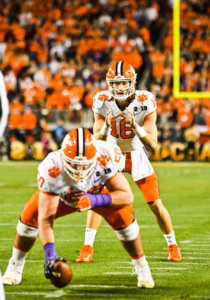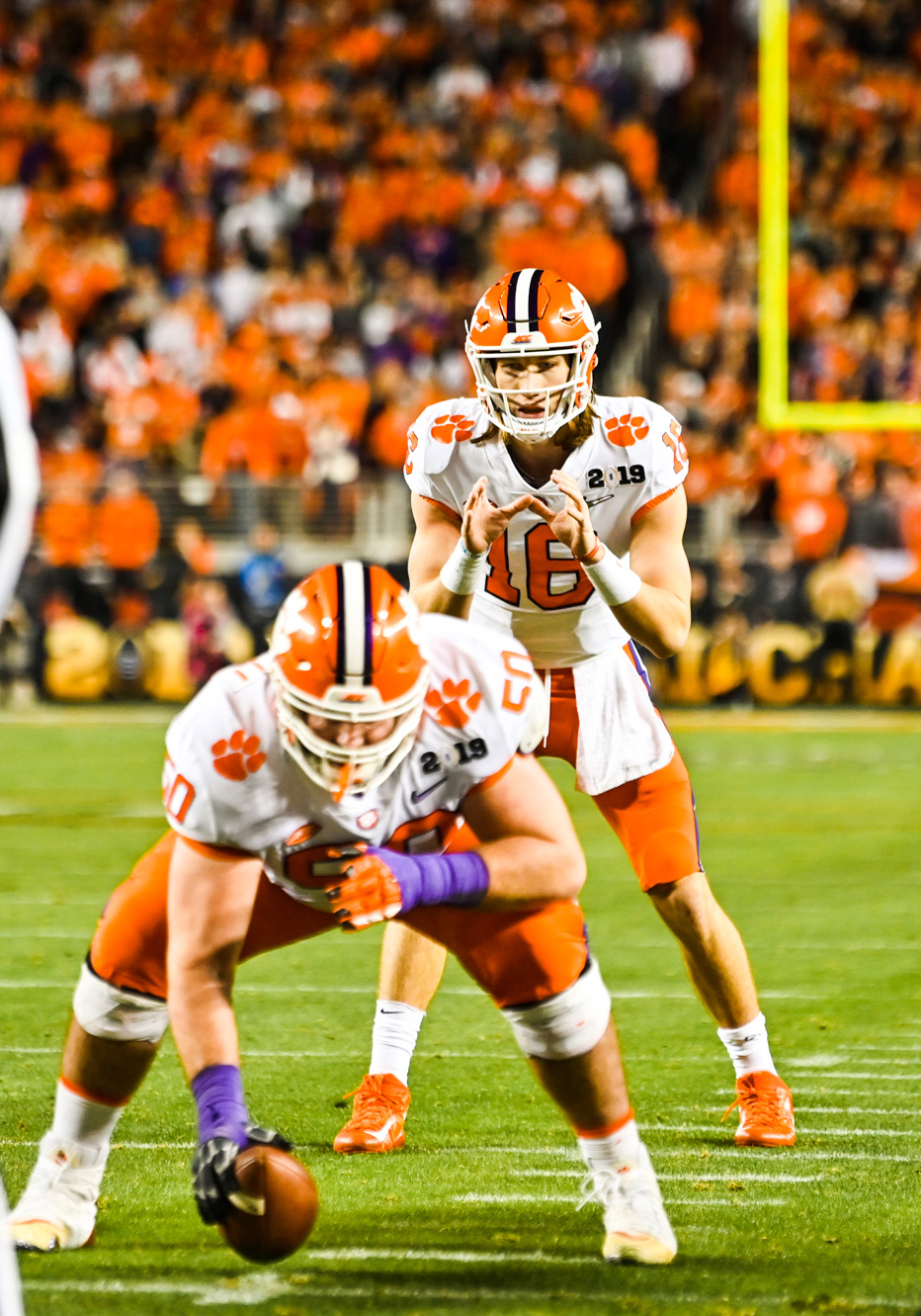
If you’re reading this article, you’re probably thinking: “Trevor Lawrence Problem?? What Trevor Lawrence problem? You mean, Trevor Lawrence: the 19 y/o kid who, as a true freshman, led the Clemson Tigers to a best-ever 15-0 record, and a 44–16 College Football National Championship victory over the seemingly invincible Alabama Crimson Tide?”
Oh yeah, THAT Trevor Lawrence… so what’s the problem? Here’s the answer to that question…
Well… Trevor Lawrence is ready for the NFL draft, but that’s not the problem. The problem is that he’s locked into three more years in a Clemson Tiger uniform due to what is (in my opinion) an archaic NFL Draft Eligibility rule, (if you want to read it, click the preceding link and scroll down to the “Player Eligibility” section).
Now while this isn’t a problem for Clemson – they just won their third national title with Trevor under center, it is a problem for the 6’6” kid from Cartersville, GA.
Here are some facts (well, perhaps mixed in with a sprinkle of opinion, but let’s call them facts anyway – everyone else does it, right?):
- Trevor Lawrence—right now—is better than the majority of senior quarterbacks who will declare for the 2019 NFL draft.
- If he entered the draft this year, Trevor would be taken in the first round.
- The New York Giants would take him with their first pick. (Oh, did I mention that I’m a New York Giants fan, and drafting him would secure our future at the QB position? –Sigh…)
- Trevor Lawrence can do no better than winning a CFP National Championship and the team finishing 15-0. Sure, he can win one, two or three more, but it will only prove what we already know: the kid can play!
Now, while his draft ineligibility is not a problem for the university or the team, in my opinion, it is not fair for a kid who has shown the skill and poise to play at the next level, to not be able to quit school and earn the type of salary that could set him and his family up for life. It is also a problem, because with the results he’s achieved in 2018/2019, to make him stay in school another season (let alone three) only poses a risk to his potential to earn top-dollar at the next level (and I won’t say what that risk is because we all know it).
Now, everyone who knows me personally, or follows me on social media, knows that I always say…
“With every what, there is a connected why, so do not judge the what, without understanding the connected why.”
In this case, the what is that players cannot enter the NFL draft until they are at least three years out of high school (among other things). The why? I’m not sure; though I am sure that the NFL had a reason when they wrote the rule. Still, when you don’t know the answer to something that puzzles you, the human thing to do is speculate…
My Speculations:
- Perhaps the NFL wrote that rule to protect players who are too young or not fully developed, from exposing themselves to the injury risk they might face in the pros. If that is the case, we can all count to three and laugh together at that one. NCAA football players are exposed to the same injury risk as their professional counterparts, and to no lesser degree.
- Perhaps the NFL wrote that rule to allow young players to develop into NFL-ready draft prospects. (I am not responsible for any coffee you may have blown all over your keyboard, tablet or phone after reading that one.) Trevor Lawrence would go in the first round. Don’t believe me? Throw his name into a mock draft and see what happens.
- Perhaps the NFL draft eligibility rules, aren’t the NFL’s at all. Perhaps that was an agreement reached with the NCAA, to allow them to hold on to their cash cow for as long as possible (oops, did I say that?). I mean, come on… Let’s not pretend to not know that of all the collegiate sports, football, far and away, generates the most revenue, hauling in nearly 4X the amount generated by the next closest sport: basketball.
So again, without actually knowing the real reason for the rule, I can only speculate; but if the truth of the matter is closer to the third point, then I propose the following (fair) solution:
Allow underclassmen who feel they are ready to enter the draft, to go ahead and declare, but only under the following conditions…
- Player must have played a full season.
- Player must be taken in the first round. If the player is not taken in the first round, they are eliminated from the draft and must continue as a collegiate player with their current school.
- Any NFL team who drafts an underclassman in the first round, must pay the NCAA a tax of $2M x the number of years of eligibility remaining on that player’s commitment, and that tax must count against the team’s salary cap.
So there you have it. That solution should be a plan that all parties involved can live with. Whether or not they would consider something like that remains to be seen; but the truth is that players like Trevor Lawrence (the same argument could also be made for one or two of his teammates on both sides of the ball), are clearly good enough to suit up and play for any team in the NFL right now. They should be allowed to work.
College players who prove themselves to be phenoms possess professional-level skill; so why should they be handcuffed and prevented from earning a salary commensurate with their skill level and experience? Why are their non-student-athlete counterparts allowed to take classes toward a degree, and earn income (as an employee, independent contractor or small business owner), but their “classmates in uniform”—who’ve proven they’re worthy—be forced to wait, when they’re ready to earn top dollar?
It’s past time to modernize and rewrite the NFL’s draft eligibility rules. NFL… NCAA… “Get it done!”
–MT

Matt D. Talford is a writer, narrator, and the author of “From Fear to Faith: A Survivor’s Story” – a memoir about overcoming a rare form of what he calls “the C-word.” The book is currently available in paperback on this website, at Amazon and at eBay—click the “Products” link in the menu to order. It is also available in eBook format on Amazon Kindle and Apple iBooks, and in audiobook (narrated by Talford himself) at audible.com, and at many other sites where audiobooks are sold.








